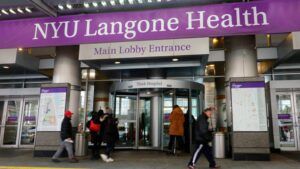Understanding Tuition-Free College Initiatives: The Unintended Consequences on Financial Equity
At Extreme Investor Network, we strive to empower our readers with unique insights into personal finance and education funding. Recently, the topic of tuition-free education has sparked extensive debate, especially following groundbreaking initiatives like those at New York University’s Grossman School of Medicine. While these programs aim to reduce financial burdens for students, they do not come without complications. Let’s delve deeper into the implications of these tuition-free models and how they impact socio-economic equity.
The Rise of Tuition-Free Initiatives
In 2018, NYU Grossman School of Medicine became a pioneer in the educational landscape, offering full-tuition scholarships to all students—regardless of financial need or academic merit. The immediate effect? A massive increase in applications. However, it also led to a concerning drop in the number of incoming students from financially disadvantaged backgrounds. Reports indicate that only 3% of the 2019 cohort identified as "financially disadvantaged," a stark decline from 12% just two years prior.
Jamie Beaton, co-founder and CEO of Crimson Education, highlights an essential paradox: tuition-free programs can inadvertently exacerbate financial inequity. Increased competitiveness attracts middle- and higher-income applicants who are better poised to access resources like tutoring and extracurricular opportunities. This raises a critical question: Are we genuinely leveling the playing field, or are we creating new barriers?
The Impact on Financially Disadvantaged Students
The goal of initiatives like NYU’s tuition-free model is laudable. "We want to clear pathways for the best and brightest future doctors to attend NYU Grossman School of Medicine without the stress of accruing debts averaging $200,000," says Arielle Sklar, a spokesperson for the school. While this liberates students from crushing debt and aligns them more closely with their passions, the declining enrollment of low-income students is a significant oversight.
Following the lead of NYU, other prestigious institutions—such as Harvard, Vanderbilt, and the University of Pennsylvania—have followed suit with generous financial aid and tuition-free policies. However, these initiatives raise another layer of concern: the potential displacement of low-income students by those from families earning $200,000 or more. According to Beaton, this trend might not only lower the percentage of low-income students but inadvertently favor middle- and upper-middle-income families.
A Growing Concern: Debt Anxiety Among Students
Despite the increasing availability of scholarships and tuition-free education, the overarching anxiety surrounding debt persists among students. According to a survey by The Princeton Review, fears about incurring too much debt are paramount among college-bound students, directly influenced by skyrocketing tuition rates, which have outpaced both inflation and other household expenditures.
The statistics are illuminating: for the 2024-25 academic year, the combined costs of tuition, fees, and living expenses at private colleges averaged $58,600—up from $56,390 the previous year. Even in state-funded public colleges, expenses are rising and remain challenging for families to absorb.
The Affordability Arms Race
In an era where college costs are rising rapidly, many elite institutions find themselves in an "affordability arms race." While this may seem beneficial, most colleges do not possess the financial resources to sustain tuition-free initiatives. Robert Franek, editor-in-chief of The Princeton Review, points out that over 95% of four-year colleges in the U.S. rely heavily on tuition-driven revenue.
Fortunately, students should focus on the full picture rather than the ‘sticker price.’ Many institutions offer financial aid, scholarships, and work-study programs that can significantly dial down the costs. As James Lewis, co-founder of the National Society of High School Scholars advises, aspiring students should look beyond "I can’t afford that." Instead, they should investigate the financial support that institutions provide to uncover potentially substantial reductions in their education costs.
Conclusion: A Call to Action for Equity
While addressing the rising costs of education, it’s crucial not to lose sight of the mission: creating equitable access to quality higher education for all. At the Extreme Investor Network, we advocate for a well-rounded approach that includes financial literacy and advocacy for continued systemic improvements in the educational funding landscape.
If you’re concerned about college costs and financing options, explore our resources and engage with our community. We’re dedicated to empowering you on your educational journey and ensuring you have the tools and knowledge necessary to make informed financial decisions—ensuring that all students have the opportunity to thrive without the burden of uncontrollable debt.

